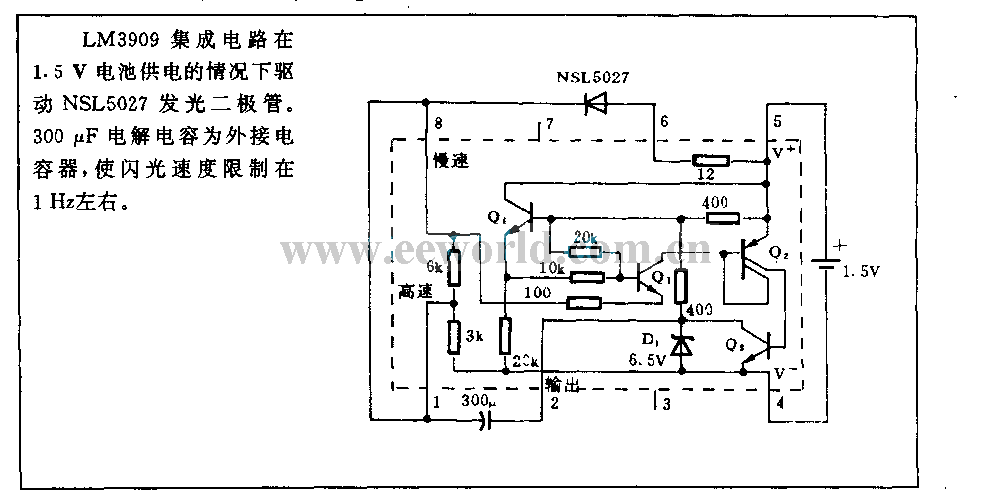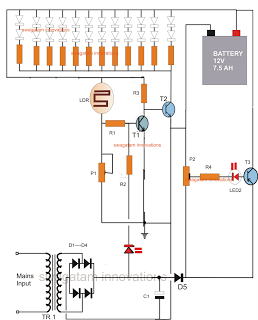
traffic light

The Traffic Light Hack is a simple interface designed to control lights within a traffic light enclosure. This device, acquired from a flea market, serves as an ambient information display. When connected to a computer, it can run programs that gather information and output it through the traffic light, providing updates without requiring user intervention. The original Traffic Light Hack gained significant attention, being featured on Hackaday and in the book "Makers." However, its initial design was cumbersome, necessitating multiple power outlets and a host computer with a parallel port for control. The Traffic Light Hack Mark II offers a complete redesign, utilizing a microcontroller with predefined light sequences and a USB interface for direct computer control and in-circuit reprogramming. Based on the open Arduino platform, it employs an embedded AVR ATmega168 microcontroller capable of autonomously cycling lights through various predefined patterns or being controlled directly from a computer via an Arduino MiniUSB adapter. The circuit requires connection to mainline power (120 V AC in the U.S.), which poses safety risks. It is essential to check all circuit continuities before powering on to prevent accidents. Driving relays directly from a microcontroller is discouraged due to the risk of high kickback voltage damaging the microcontroller and the high current draw that microcontrollers cannot handle. A safer approach involves using a transistor to drive the relays or employing a solid-state solution, such as an opto-isolator. The Arduino platform was chosen for its affordability, availability of components, decent documentation, and user-friendly development tools. While relays provide tactile feedback, opto-isolated circuits offer better safety by isolating low-voltage DC circuits from high-voltage AC mains power.
The Traffic Light Hack Mark II circuit integrates several key components for effective operation. At its core, the microcontroller (AVR ATmega168) executes the programmed light sequences and manages communication with the controlling computer through the USB interface. The microcontroller is programmed using the Arduino Integrated Development Environment (IDE), which simplifies the coding process with its user-friendly interface and extensive libraries.
To interface with the high-voltage AC power required for the traffic lights, the circuit employs a relay system. However, to mitigate risks associated with inductive kickback from the relays, a transistor is utilized to switch the relays on and off. This configuration protects the microcontroller from potential damage while allowing for the necessary current to drive the relays. The transistor acts as a switch that is controlled by the microcontroller's GPIO pins, allowing it to handle the higher current required by the relays safely.
Alternatively, an opto-isolator can be used in place of relays to provide a solid-state solution that enhances safety by completely isolating the microcontroller from high-voltage circuits. This method ensures that any voltage spikes or noise generated in the AC circuit do not affect the low-voltage microcontroller, thus enhancing the reliability of the system.
For power supply, the circuit requires a robust power management solution to convert the mainline 120 V AC to the necessary operating voltages for the microcontroller and the relays. A transformer can be used to step down the voltage, followed by a rectifier and voltage regulator to provide stable DC power to the microcontroller and other components.
In conclusion, the Traffic Light Hack Mark II represents an innovative approach to ambient information display using a microcontroller-based system. By implementing safety measures such as using transistors or opto-isolators and ensuring proper power management, this project can effectively serve its purpose while minimizing risks associated with high-voltage circuits.The Traffic Light Hack is a simple interface for controlling lights inside a traffic light enclosure. No, not a real light out on the street. This one was picked up at a flea market, and it`s hanging in my room. It is designed to be an ambient information device. When it is under computer control, you can run programs that collect information and output it on the traffic light. This "push" of information is supposed to keep you informed without your intervention. The original Traffic Light Hack was a huge success, being featured on Hack a day and in the book Makers. However, the original design was cumbersome, requiring multiple power outlets and a host computer with a parallel port for controlling the system.
The Traffic Light Hack Mark II is a complete design of the traffic light hack. It is run by a microcontroller that has a set of predefined light sequences in addition to a USB interface for direct computer control and in-circuit reprogramming of the microcontroller. The circuit is based on the open Arduino platform. The embedded AVR ATmega168 can autonomously cycle the lights through any number of predefined patterns, or be controlled directly from a computer over an Arduino MiniUSB adapter.
This circuit requires connecting to mainline power (120 V AC in the U. S. ). This is quite dangerous, and you can easily hurt yourself or damage your computer. Always check all circuit continuities before plugging anything in. If you mess up, it`s not my fault. It has been suggested by the ever-civil commenters at Hack a day that driving relays directly from a microcontroller is, in short, a Very Bad Idea. The inductive coils can cause a high kickback voltage when they are suddenly closed, possibly damaging the microcontroller.
They also require a large current draw, which microcontrollers are not designed to handle. Ideally, the microcontroller would drive a transistor, which in turns allows 12 VDC to be applied to the relays. Also, a strictly solid-state solution, such as an opto-isolator replacing the relays, would be sufficient.
Arduino The Arduino platform was a no-brainer. The components are cheap and readily available, the documentation is decent, and the development tools are free and cross-platform. Also, the language is dead-easy to learn and use. Electromechanical relays One commenter on the original hack mentioned that opto-isolated circuits would be safer than relays, physically isolating the low-voltage DC circuit and the high-voltage AC mainline power.
This is true, but I have not had any trouble with the relays, and, more importantly, the relays provide tactile feedback in the form of a "click" when they switch over (think of the noise your car blinker makes). 🔗 External reference
The Traffic Light Hack Mark II circuit integrates several key components for effective operation. At its core, the microcontroller (AVR ATmega168) executes the programmed light sequences and manages communication with the controlling computer through the USB interface. The microcontroller is programmed using the Arduino Integrated Development Environment (IDE), which simplifies the coding process with its user-friendly interface and extensive libraries.
To interface with the high-voltage AC power required for the traffic lights, the circuit employs a relay system. However, to mitigate risks associated with inductive kickback from the relays, a transistor is utilized to switch the relays on and off. This configuration protects the microcontroller from potential damage while allowing for the necessary current to drive the relays. The transistor acts as a switch that is controlled by the microcontroller's GPIO pins, allowing it to handle the higher current required by the relays safely.
Alternatively, an opto-isolator can be used in place of relays to provide a solid-state solution that enhances safety by completely isolating the microcontroller from high-voltage circuits. This method ensures that any voltage spikes or noise generated in the AC circuit do not affect the low-voltage microcontroller, thus enhancing the reliability of the system.
For power supply, the circuit requires a robust power management solution to convert the mainline 120 V AC to the necessary operating voltages for the microcontroller and the relays. A transformer can be used to step down the voltage, followed by a rectifier and voltage regulator to provide stable DC power to the microcontroller and other components.
In conclusion, the Traffic Light Hack Mark II represents an innovative approach to ambient information display using a microcontroller-based system. By implementing safety measures such as using transistors or opto-isolators and ensuring proper power management, this project can effectively serve its purpose while minimizing risks associated with high-voltage circuits.The Traffic Light Hack is a simple interface for controlling lights inside a traffic light enclosure. No, not a real light out on the street. This one was picked up at a flea market, and it`s hanging in my room. It is designed to be an ambient information device. When it is under computer control, you can run programs that collect information and output it on the traffic light. This "push" of information is supposed to keep you informed without your intervention. The original Traffic Light Hack was a huge success, being featured on Hack a day and in the book Makers. However, the original design was cumbersome, requiring multiple power outlets and a host computer with a parallel port for controlling the system.
The Traffic Light Hack Mark II is a complete design of the traffic light hack. It is run by a microcontroller that has a set of predefined light sequences in addition to a USB interface for direct computer control and in-circuit reprogramming of the microcontroller. The circuit is based on the open Arduino platform. The embedded AVR ATmega168 can autonomously cycle the lights through any number of predefined patterns, or be controlled directly from a computer over an Arduino MiniUSB adapter.
This circuit requires connecting to mainline power (120 V AC in the U. S. ). This is quite dangerous, and you can easily hurt yourself or damage your computer. Always check all circuit continuities before plugging anything in. If you mess up, it`s not my fault. It has been suggested by the ever-civil commenters at Hack a day that driving relays directly from a microcontroller is, in short, a Very Bad Idea. The inductive coils can cause a high kickback voltage when they are suddenly closed, possibly damaging the microcontroller.
They also require a large current draw, which microcontrollers are not designed to handle. Ideally, the microcontroller would drive a transistor, which in turns allows 12 VDC to be applied to the relays. Also, a strictly solid-state solution, such as an opto-isolator replacing the relays, would be sufficient.
Arduino The Arduino platform was a no-brainer. The components are cheap and readily available, the documentation is decent, and the development tools are free and cross-platform. Also, the language is dead-easy to learn and use. Electromechanical relays One commenter on the original hack mentioned that opto-isolated circuits would be safer than relays, physically isolating the low-voltage DC circuit and the high-voltage AC mainline power.
This is true, but I have not had any trouble with the relays, and, more importantly, the relays provide tactile feedback in the form of a "click" when they switch over (think of the noise your car blinker makes). 🔗 External reference





